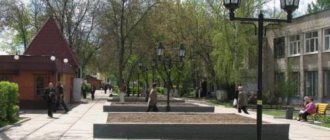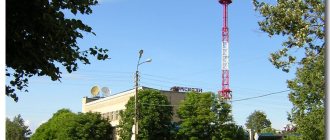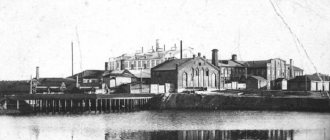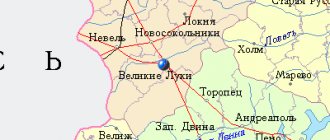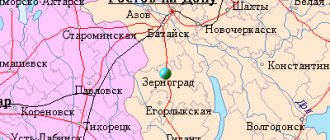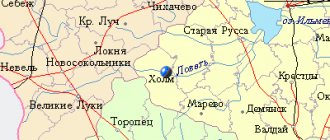Sosensky. The future is coming
In the last issue of NG we wrote about the defense of the project for the long-term development of the Sosensky single-industry town that took place in Skolkovo. On July 6, members of the project team met with deputies and representatives of the city business community.
Introduction
The meeting took place in the assembly hall of the city administration. The meeting was opened by the Minister of Economic Development of the Kaluga Region, Dmitry Razumovsky: “I think that our region is lucky - we got into a project that is supported by the Russian Federation. This is a very serious program - a program for the development of single-industry towns. There are only 319 of them and it includes two cities of the Kaluga region - Kondrovo and Sosensky. According to many government support measures, they are now given the green light and they have a good chance for dynamic development.”
The minister noted that we have a strong city-forming enterprise. Nevertheless, everything is changing in this world, and the issue of diversifying the city economy is one of the most important: “You always need to think about new vectors of development, about new drivers that will move the city forward and develop it. We, our department, first of all consider new directions for economic development. Everything else - the social sphere, a comfortable urban environment - is very closely related to whether highly efficient production and enterprises will appear in the city, whether there will be a tax base, whether people will come here to work. It is clear that without the presence of high-tech industries it is difficult to do this.”
The meeting continued with two presentations, which caused a lively discussion, which is what the organizers of the meeting were counting on - the project presented in Skolkovo is only the first step of a long-term program. It will be formed with the direct participation of the city community, and Dmitry Olegovich said that he hopes for the help and support of those gathered: “There will be more discussions. Not one or two - together we will form a program for the development of the city and we need new thoughts, ideas, directions.” The presentations revealed in detail the concept of city development and talked about one of the very important tools for supporting single-industry towns - the status of a priority development territory.
Sosensky's development concept
The minister asked the head of the city administration, Svetlana Volodchenko, to introduce it.
Svetlana Anatolyevna briefly outlined the history of all the sharp turns that the economy of our city has experienced in its history, especially focusing the attention of listeners on the fact that in 1975, with the launch of the NIIAP branch, highly qualified personnel from all over the USSR rushed to Sosensky: “1991 is the peak development of the plant and the city, when its population was 15,000 people. What's happening now? The enterprise operates stably, but the city, unfortunately, is steadily dying. Our economy and urban environment are not developing. The average salary in the city, taking into account the activities of the city-forming enterprise, exceeds the regional average, and without taking into account it is much lower.”
Mentioning the serious (almost 40%) dependence of the city budget on the activities of the instrument-making plant, Svetlana Anatolyevna said that in the city, in addition to the city-forming enterprise, there are three more key high-tech industries: “Unfortunately, until now these enterprises were not interested in the development of the city, but we hope that in the new conditions the situation will change.”
“The specificity of Sosensky is that it has high-tech production and highly qualified personnel, there is an industrial park, and the city is environmentally friendly. But at the same time, this is a logistics dead end, which does not have the possibility of expanding zones for the implementation of investment projects (due to the proximity to the territory of the Ugra National Park), and highly qualified urban personnel are employed in closed industries inaccessible to new businesses, Svetlana summarized the introductory part of her presentation Anatolievna. — Based on our premises, the development of the city and its expansion to new scales is possible only through the creation of new high-tech industries. At the same time, our highly qualified personnel are not a city resource and are not available to investors, and unique competencies are dying, and the time for their resuscitation is limited.”
Having outlined the problems and the vector for solving them, the head of the administration spoke in detail about the new concept for the development of the city economy. In Sosensky it is planned to create an innovative structure that includes both mechanisms for the reproduction of qualified personnel and new production facilities where they will be in demand.
Raising people capable of understanding twenty-first century technologies begins in school. New times have brought new forms of working with children and adolescents. These forms were centers for youth innovative creativity and quantoriums (children's technology parks in which future inventors, engineers and scientists are educated). Now the government of our region has focused on creating these structures in Obninsk and Kaluga. Now Sosensky must join the science city and the regional center, the key to this is the support of the Single-Industry Towns Development Fund and the regional government.
There is already a business incubator in Sosensky - an organization dedicated to supporting the projects of young entrepreneurs. However, in the absence of business ideas, it practically does not work. To change this situation, a regional pilot project to reboot business incubators is being launched in the city; a team of specialists from Obninsk is being brought in to implement it. New benefit systems for startups will appear, and they will apply not only to large investors, but also to entrepreneurs opening small businesses. Next, Svetlana Anatolyevna spoke about the projects with which it is planned to begin the development of the city economy.
"Special lit"
Spetslit is the only enterprise in Russia capable of high-precision casting and working with high-alloy alloys. Now the company works mainly with oil and gas corporations, due to outdated equipment, producing a range of products for which it can afford to make a markup on cost of no more than 8%.
Negotiations were held with the owners of Spetsilit and it was agreed that the enterprise would re-equip production and create a quality laboratory. Spetslit was also helped to establish contacts with the Kozelsk-based Innotechmet Production Association, which is capable of performing high-precision mechanical processing of products manufactured by the Sosensky enterprise. As a result, Spetslit should expand its product range and, in particular, become the only Russian manufacturer of medical implants made of cobalt alloys. Today, such implants are imported from abroad - entering this market will allow the company to increase its margins to 50%.
It is also planned to restore the production of beryllium alloys at Spetslit. Today, 90% of these products are manufactured in the USA. After the shutdown of the Sosensky beryllium workshop, there were no manufacturers left in Russia of this product, which was in demand in the nuclear and space industries.
The company needs 88 million rubles to re-equip production and create a quality laboratory. This loan is planned to be obtained from the Russian Industrial Development Fund. For the reconstruction of the neutralization workshop, without which it is impossible to restore the production of beryllium alloys - approximately 500 million. These treatment facilities are federally owned, so negotiations will have to be conducted with the Federal Agency for State Property Management. A package of documents and an official appeal to these structures are now being prepared.
"Aeroxo"
Aeroxo is a young Russian company that produces unmanned aerial vehicles. The program developers found its owners while searching for investors interested in investing in the city economy. The company is already ready to open a design bureau for the development of prototypes at the Sosensky technical school. In the future, it is also possible to create UAV production.
In parallel, other promising areas directly related to this industry are being developed, such as the production of electric motors and single-board computers for the same UAVs.
"Russian flax"
We have already written about the creation of a large flax processing enterprise in Sosensky. The executive director of Russian Flax LLC took part in the development and defense of the city development project. The launch of production will take place next year, and it will reach its designed capacity by 2022. The Sosensk enterprise will become Europe's largest producer of linen fabric and yarn. It will be based on the territory of the industrial park, which was created in our city over the past years. It is also very important that the investor independently organizes the cultivation of flax for its products in the Kaluga region.
SDR
Our city-forming enterprise will also not remain on the sidelines of the coming changes. Production diversification programs were discussed with the management of the SPZ. The plant’s participation is also expected in the creation of a youth creativity center, a quantorium and a high-tech technopark.
Renovation of the territory
Ten hectares of forest not far from the city are occupied by the dumps of the mines where our history began. Modern technologies make it possible to process them into building materials. An investor potentially interested in this activity has already been found. If everything works out, the city will be provided with building materials for several years to come, and new industries can be developed in the vacated territories.
The city development program defines target indicators for the success of its implementation. Among others, total revenue is expected to triple by 2030.
Job productivity is ten times, average wages are two and a half times. In addition, the share of exports in the gross output of Sosensky's enterprises should rise from zero to thirty-five percent.
Also, the energy consumption when producing similar volumes of products should be reduced by half.
Having talked about these ambitious plans, Svetlana Anatolyevna touched upon the development of the urban environment: “Now it is a space that can be described as “Work - home - work.” We set ourselves the task of creating a living space between home and work.” The project team selected public spaces that will be developed first. Among them is the development of a large city park.” It is planned to be located in the forest belt between the city and the plant.
After Svetlana Anatolyevna’s report, we moved on to discussing the presented program. City Duma deputy Natalya Shaykhulina asked where specialists coming to the city would live. Dmitry Shmakov answered the question.
— The main emphasis of the entire program is on training our own specialists. Nevertheless, the issue of providing housing was also considered during the creation of the program. An investor came to Sosensky and bought the former barracks building (in the old town, opposite the boarding school). He has already prepared documentation for connecting communications to the building and is ready to begin its reconstruction. Upon completion, thirty apartments will be put on the housing market for sale or rent. In addition, there is a secondary housing market in the city - we have a lot of it.
When asked where the city will get additional volumes of electricity, Dmitry Alekseevich replied that this problem will be solved comprehensively: “Firstly, through the use of energy-saving technologies - now, figuratively speaking, our enterprises are pouring out electricity in buckets when creating their products. The plan for providing electricity to the industrial park has already been worked out. And in addition, we held a meeting with a potential investor who is ready to install a cogeneration plant (mini-CHP) with a capacity of up to 30 MW. The gas on which such installations operate comes to Sosensky in sufficient quantities.”
TASED
We have more than once spoken in general terms about the status of the territory of rapid socio-economic development - this instrument for the development of territories, and in particular single-industry towns, of the Russian Federation. After defending the project described above, the decision to assign the status of TASED to Sosensky was approved. Now the Government of the Russian Federation is preparing documents that will legally approve this status.
The Minister of Economic Development of the region, Dmitry Razumovsky, told those gathered that day in the assembly hall of the city administration in more detail about this instrument.
TASED resident status is assigned to legal entities by the regional government. Once included in the register of TASED residents, an entrepreneur is obliged to create at least ten jobs in this territory within a year. If the enterprise is already operating, then within three years after being included in the register, it must have an increase in jobs of at least the average number of employees. There is also a limitation here - attracting foreign labor cannot account for more than 20% of the total number of employees.
The second parameter is the minimum amount of capital investment. It must be at least 2.5 million rubles per year.
The TASED does not house the production of excisable goods (with the exception of cars and motorcycles), oil and natural gas production, and pipeline transport activities, which, however, is not very relevant for Sosensky.
Sosensky has personal restrictions on types of production that cannot be covered by the status of a TASED resident. This is the so-called monoactivity. In our city, according to OKVED, this is the production of vehicles and equipment. There is a list of products, which, however, according to the minister, includes quite unique products such as navigation systems for submarines.
Mandatory requirements - registration of a legal entity and its activities must be carried out on the territory of a single-industry town. A city-forming organization or its subsidiary cannot be a resident of a PSEDA.
Having fulfilled all these conditions and received the status of a TASED resident, the enterprise receives serious benefits, which can be found in the table below.
Benefits for residents of TASED created in the single-industry towns of Sosensky and Kondrovo
| Tax | General mode | For residents of TASED |
| Income tax | 2% (3% in 2017–2020) (federal budget) | 0% for 5 tax periods after receiving the first profit |
| 18% (17% in 2017–2020) (budget of a constituent entity of the Russian Federation) | up to 5% within 5 tax periods after receiving the first profit and at least 10% during the next 5 tax periods | |
| Insurance premiums | 30% (pension fund - 22%, social insurance fund - 2.9%, compulsory health insurance fund - 5.1%) | 7.6% for 10 years (pension fund - 6%, social insurance fund - 1.5%, compulsory health insurance fund - 0.1%) |
| Property tax | 2,2 % | Possibility of reduction on a general basis by decision of regional authorities to 0% |
| Land tax | 1,5 % | Possibility of reduction on a general basis by decision of local authorities to 0% |
Having talked about the benefits and requirements for residents of TASED, the minister answered questions from entrepreneurs present at the meeting.
Concluding the meeting, Dmitry Olegovich thanked those gathered and admitted that, although he certainly knew before that such a city existed - Sosensky, before starting work on the program, he did not even imagine how serious our personnel reserves and potential for development were.
The city development program was presented by its developers: Minister of Economic Development of the region Dmitry Razumovsky, Deputy Head of the Kozelsky District Administration Dmitry Shmakov and Head of the Sosensky Administration Svetlana Volodchenko. The development team also included the general director of the regional development corporation, Yuri Ivanov, and the executive director of Russian Flax LLC, Andrey Karachev, who were not present at the meeting that day.
All of the above is just the beginning of a long journey. All ideas and solutions presented will be developed and improved. And new specialists are already joining the team that will now implement the program.
Zhenya LUKASHIN.
